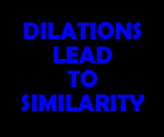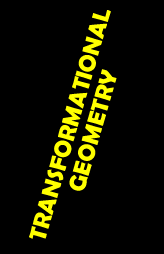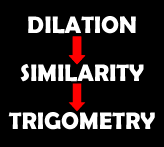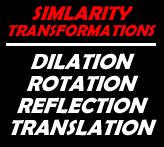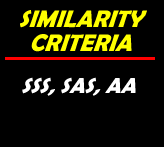G.SRT.A.1A Verify experimentally the properties of dilations given by a center and a scale factor: a dilation takes a line not passing through the center of the dilation to a parallel line, and leaves a line passing through the center unchanged.
G.SRT.A.1B Verify experimentally the properties of dilations given by a center and a scale factor: the dilation of a line segment is longer or shorter in the ratio given by the scale factor.
G.SRT.A.2 Given two figures, use the definition of similarity in terms of similarity transformations to decide if they are similar; explain using similarity transformations the meaning of similarity for triangles as the equality of all corresponding pairs of angles and the proportionality of all corresponding pairs of sides.
G.SRT.A.3 Use the properties of similarity transformations to establish the AA criterion for two triangles to be similar.

